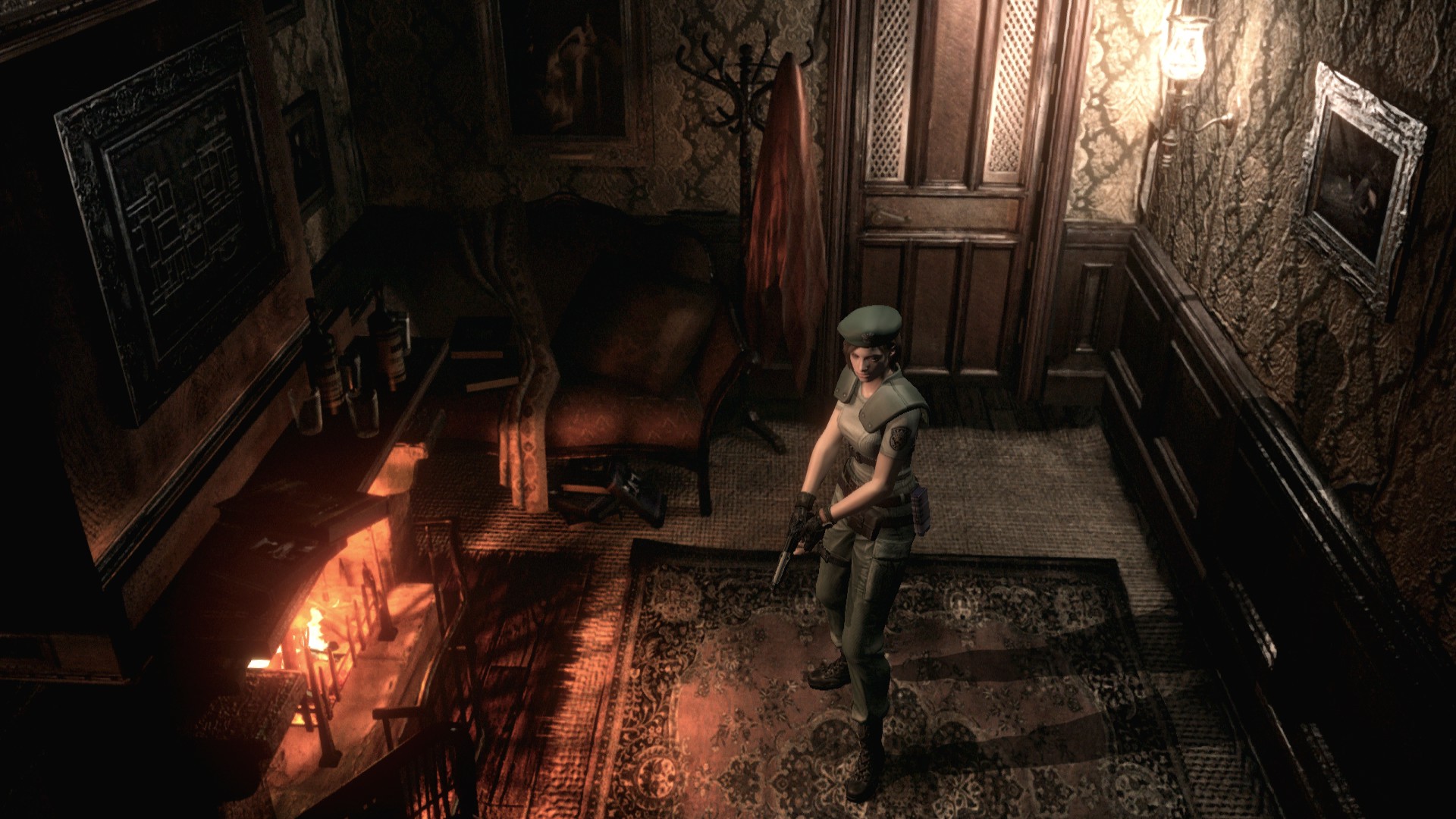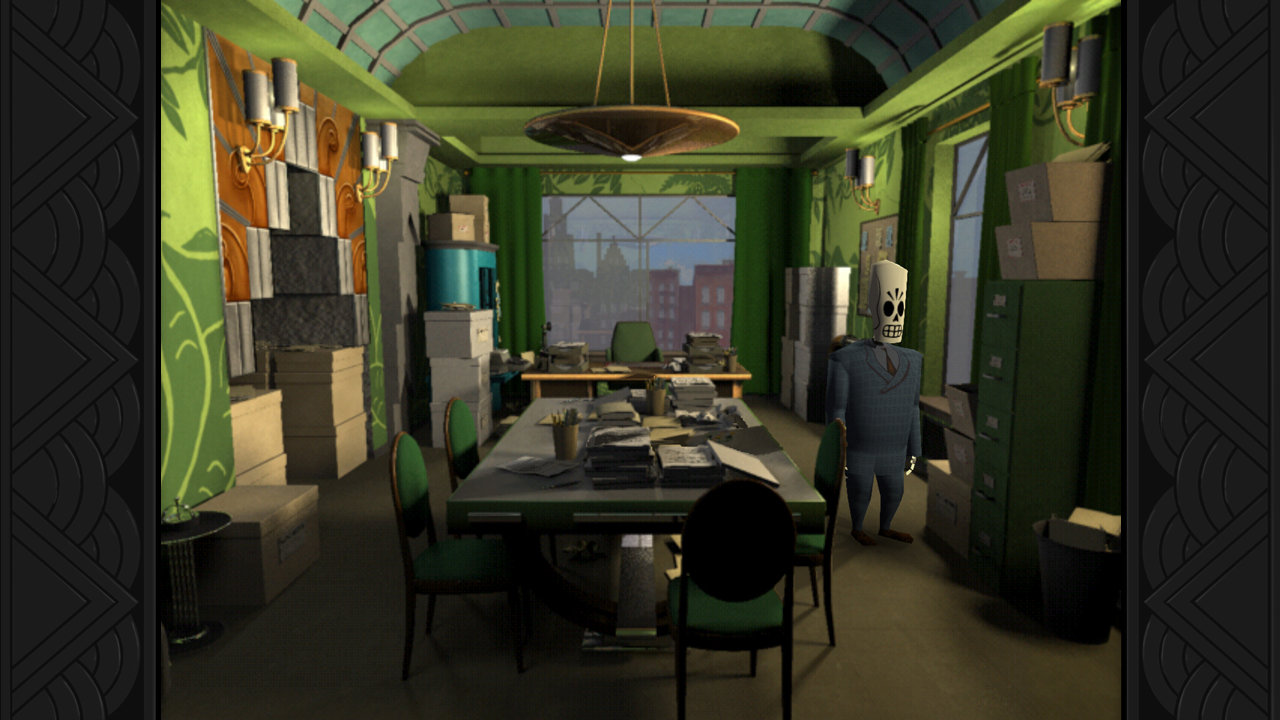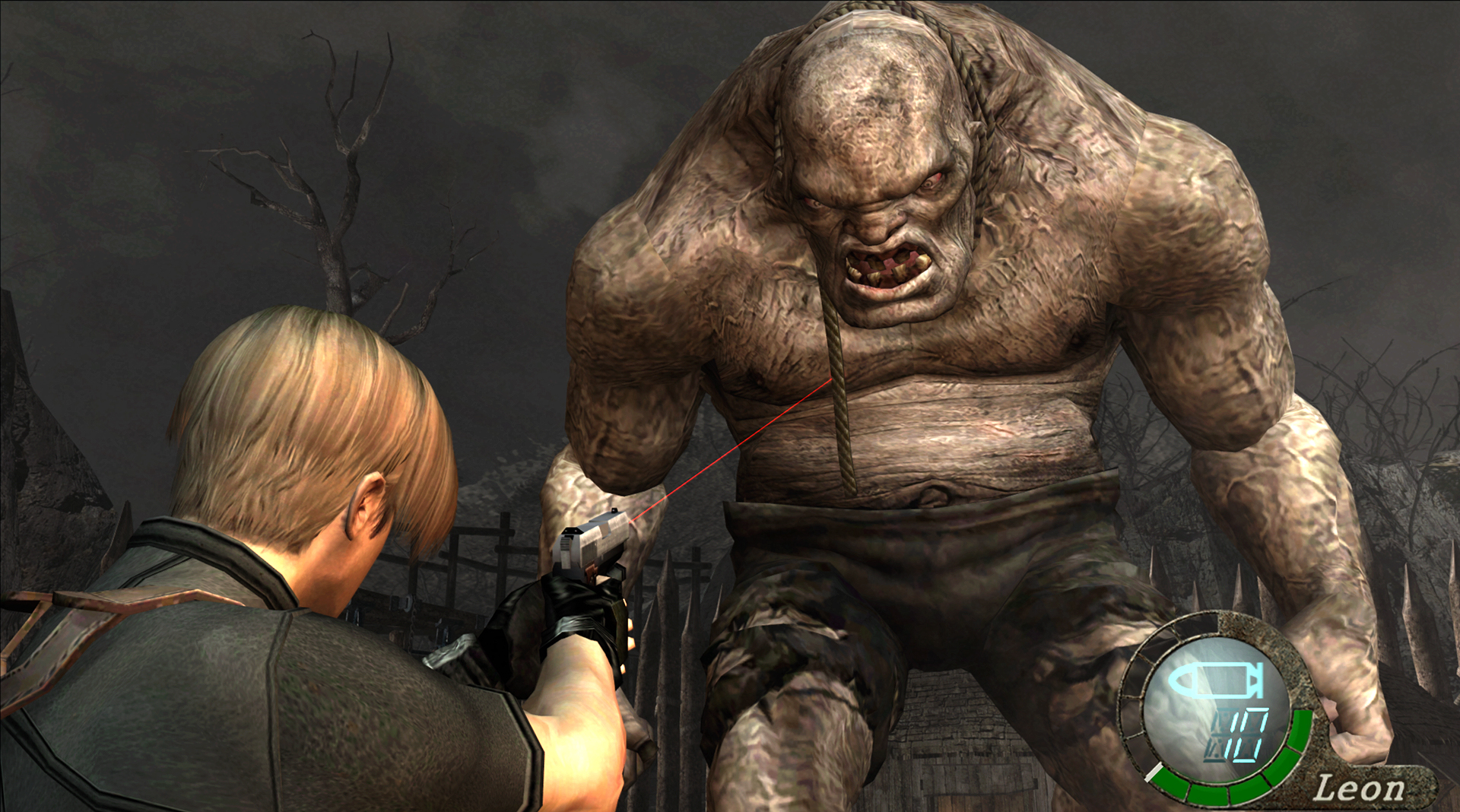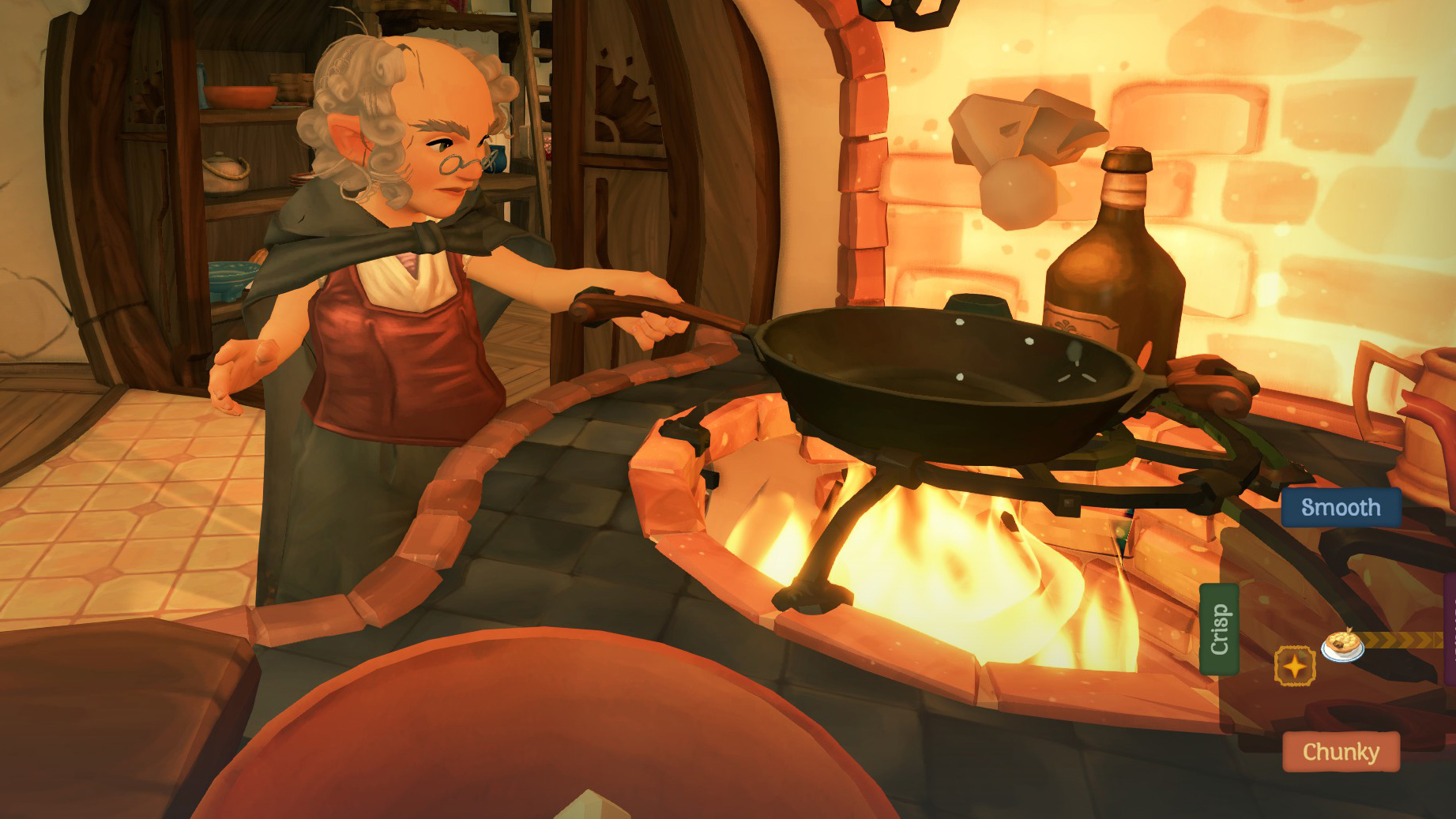A eulogy for tank controls

It’s always tough to talk about someone or something that’s passed away, but I’m going to suck it up and get this out, because tank controls deserve a proper farewell.
For those who never had the privilege—or misfortune, depending on who you ask—of experiencing the infamous game mechanic, tank controls refers to movement that is relative to the character’s orientation rather than the camera’s. Pressing up always propels characters forward, while left and right rotate with no acceleration. Pressing down causes the character to walk backwards instead of turning around and running in that direction. Criticism, and the mechanic’s name, come from the obvious fact that humans can move in any direction, making tank controls feel unnatural. It’s like pushing around an invisible shopping cart at all times.
New angles
Last month saw the re-release of two classic games from the late ‘90s and early ‘00s: the remake of the original Resident Evil and “the last great adventure game,” Tim Schafer’s Grim Fandango. At launch, the games were lauded for their atmosphere and importance to their genres, but derided for their tank controls. Schafer in particular spent a good decade-and-a-half defending the control scheme, as did fans of the polarizing mechanic. It’s alright, Tim. People just don’t get it.

The remastered versions allow players to opt out of the original control schemes, symbolically hammering the final nail into the mechanic’s two-track, slow-turning coffin. But why, despite the derogatory name and constant condemnation, did they survive as long as they did?
Tank controls hail as far back as 1991, used as the main movement of the basic polygonal character in perhaps the first 3D platformer, Alpha Waves. The game’s influence can be felt in the 1996 abomination, Bubsy 3D. (Yes, an abomination because of its tank controls.) Consequently, the man in charge of Alpha Waves’ DOS port, Frédérick Raynal, took the game’s framework to help develop the monumental 1992 survival-horror title, Alone in the Dark. The game’s mix of 2D, pre-rendered backgrounds and 3D objects and characters required fixed camera angles. With the camera constantly cutting to different perspectives, traditional movement became awkward as walking forward could mean pressing up, down, left, or right at a moment’s notice. Tank controls were used to maintain a sense of direction in spite of the angle changes. A single key propelled the character in the direction he was facing.
Alone in the Dark inspired other survival horror titles like Silent Hill and Resident Evil. Though the control scheme was, in some way, bore out of necessity, the ingenuity of developers like Alone in the Dark’s Infogrames team and Resident Evil’s Shinji Mikami lead to inspired uses of these technological limitations. With the controls independent of the camera, the developers could use fixed angles dramatically, resembling the cinematography found in horror films.
High-angled and distant long shots were used to set up the first zombie encounter in Resident Evil, hiding the bone-white, rotting enemy in an alcove while making the player feel small and insignificant as they inched forward. The fixed camera opened up a toolbox of horror techniques. A Dutch tilt, for instance, could disorient the player, while a tightly-framed close-up could hide or highlight information. Without omnipotent control of the camera, you feel stuck and powerless inside the character’s body as a gigantic spider inches on the wall behind you. Tank controls allowed for this style of tonal design without the frustrations of a traditional control scheme—as illustrated by the HD remakes alternate, camera-relative configuration.
Keep up to date with the most important stories and the best deals, as picked by the PC Gamer team.
The intention was to eliminate any barriers between the player and the world.
Though a staple of the survival horror genre, tank controls found their way into other games, such as Tomb Raider and BioForge, two games which later influenced Tim Schafer's first 3D graphic adventure game, Grim Fandango. Ever the storyteller, Tim Schafer wanted to do away with the text and mouse parser of Full Throttle and Day of the Tentacle in favor of tank controls. The intention was to eliminate any barriers between the player and the world such that they weren’t an omnipotent observer wiping their magical cursor over the screen in search of relevant pixels. Instead, they would need to walk through the levels and observe Manny’s reaction to objects around him. The focus switches from the user interface to the world around the character.
As with many of the 90s examples, though, Grim Fandango’s tank controls faltered in execution. Objects in the game were padded with a bouncy trigger as to prevent getting stuck on geometry. Unfortunately, it often feels as though you’re Sonic ricocheting between two springs. It was especially problematic when attempting to walk through doors. If not careful, you can find yourself stuck bounding inside the door jamb, as Tim Schafer experienced while replaying the game.
"I'm trying to show how awesome the tank controls are, Manny." — Tim Schafer
However, playing Grim Fandango today with its wide variety of control options, I see the value in the original design decision. Throwing all my attention to the environment and characters instead of my mouse cursor pulls me deeper into the afterlife. I become extremely sensitive to the objects in the scene, observing Manny to see how he reacts as I walk about. Though less accessible and polished than its point-and-click brethren, Grim Fandango enveloped me with the world instead of presenting a matte painting to scrub a cursor over. As Schafer said, “You feel like you are in the center of the character, and the world’s rotating around you.”
Though its origins belong on the PC with Alone in the Dark and even early FPS games like Wolfenstein 3D (God help the poor souls who played “I am Death incarnate” without a mouse), tank controls spread more widely on consoles. In particular, Capcom seemed to have a more personal stake in the control scheme’s success than their Mega Man property. Refinements abound in their work from the late ‘90s to mid ‘00s. Resident Evil 3: Nemesis included a 180-degree turn for quick changes in direction. God Hand added multi-directional dashes to its rewardingly complex beat-em-up gameplay. Onimusha’s characters lunged towards enemies with each swipe of their swords.
Turning away
In their heyday, tank controls brought more to the table than they took away. Silent Hill’s foggy town felt that much more menacing with its dynamic camera. Grim Fandango became a cinematic milestone by avoiding the growing pains of early 3D visuals. God Hand remains one of the few great 3D beat-em-up games. And without many drastic alterations, Resident Evil still looks as drop-dead gorgeous as it did in 2002; and scares well to boot.
However, new designs in motion and camera mechanics have hit the brakes on tank controls, leaving the nostalgic control scheme in the dust. With both analog sticks occupied for movement, Brothers: A Tale of Two Sons uses fixed camera angles. (Though horizontal rotation is occasionally allowed.) But instead of sudden, constant shifts in perspective, the camera follows above the two characters through smooth, unbroken animations, eliminating the need for tank controls. The claustrophobia of survival horror found new life in first-person exploratory games like Amnesia. And, of course, over-the-shoulder camera angles—ironically yet brilliantly instituted by Mikami’s Resident Evil 4—paved the way for both cover-based, third-person shooters like Gears of War and the next evolutionary step for narrative-driven 3D adventure games like Life is Strange.

Despite a starring role in the PS3 game Heavy Rain—where you control your character like an actual vehicle by using the shoulder buttons to accelerate—tank controls are on life support. Though their use allowed for incredible, technologically-astounding experiences in the past, they also shouldered much of the blame for those games’ frustrations, warranted or not. With such a negative stigma, the control scheme may now only find relevance in games where you control actual tanks. But after trying Resident Evil and Grim Fandango without them, it feels like we didn’t know what we had until it was gone. We can only hope a brave designer will come along someday and decide to use tank controls to transcend genres once more. Well, half of us hope that. The other half hope tanks controls rot in hell.
So as Tim “Never-Strafing” Schafer tweets congratulations to players who finished Grim Fandango with its original control scheme—“The Right Way” according to the awarded achievement—we bid adieu to tank controls. You came. You slowly turned around and positioned yourself to move forward. And you were conquered.

